weight
now browsing by tag
What is in Your Protein Shake
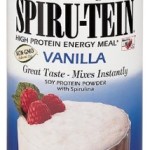
[contact-form][contact-field label=’Name’ type=’name’ required=’1’/][contact-field label=’Email’ type=’email’ required=’1’/][contact-field label=’Website’ type=’url’/][contact-field label=’Comment’ type=’textarea’ required=’1’/][/contact-form] I don’t know about you but when I started looking for a protein powder there were so many on the shelves of the health food store, I had no idea which one to chose. After a little research on the Internet, I learned the difference. Keep on reading and maybe this will help you chose the right protein powder for you.
Protein powders provide a good source of protein for the athlete, a growing teenager whose eating habits are less than perfect, you want to amp up your workout and build muscle, or if you are a vegetarian and worry you are not getting enough protein. But please know that most everyone can get a good quality protein from eating lean meats, fish, and dairy products. Not everyone needs to drink a protein shake.
If fact, doctor’s and nutritionists warn against consuming too much protein which can create havoc in your body. Your body will leach calcium out of your bones so your system will become alkaline. Too much protein creates a highly acidic environment in your body. Acid=bad, alkaline=good.
The average person does not need to supplement with protein powders, and they can be very expensive. So, if that bodybuilder at the gym is slurping down a 16 ounce protein shake, that doesn’t necessarily mean that you have to, too.
Another good source of protein is plant protein considered more beneficial for the body over animal protein.
1. Vegetables – the proper foundation for all diets.
• 1 avocado – 10 grams
• 1 cup broccoli – 5 grams
• 1 cup spinach – 5 grams
• 2 cups cooked kale – 5 grams
• 1 cup boiled peas – 9 grams
• 1 cup cooked sweet potato – 5 grams
2. Legumes, also vegetables, get their own mention. Specifically lentils and beans, the foundation of many diets for centuries.
• 1 cup soybeans – 28 grams (1 cup tempeh – 30 grams)
• 1 cup lentils – 18 grams
• 1 cup refried beans – 15.5 grams
• 1 cup garbanzo beans (and hummus) – 14.5 grams
• 1 cup pinto, kidney, black beans – 13-15 grams
• 1 oz peanuts – 6.5 grams
3. Nuts and seeds – a staple in most vegetarian and vegan diets.
• 1 oz. cashews – 4.4 grams
• 1 oz. sesame seeds 6.5 grams, 3 tablespoons of tahini – 8 grams
• 1/4 cup (2 oz.) walnuts – 5 grams
• 1 oz. pistachios – 5.8 grams
• 2 tbsp almonds – 4 grams
• Nut butters – peanut butter, almond butter, cashew butter – 2 tablespoons has about 8 grams of protein
4. Non-dairy milk
Soy, almond, 1 cup gets you 7-9 grams of protein.
5. Grains – Ancient grains, sprouted grains, multi-grains – a major part of the diet.
• Quinoa is versatile and delicious. 1 cup – 9 grams.
• Amaranth, bulgur, brown rice, wheat germ, oat bran are other grains with a high protein content.
• Oatmeal – 1 cup = 6 grams.
• Sprouted grain bread products – buns, tortillas, bread. Pack a sandwich or a wrap and you’ll get 7-10 grams from the bread alone.
6. Supplements
Spirulina and chlorella are used often by vegetarians and vegans for their rich nutrient content, and protein content.
Hemp – 30 grams of hemp powder in your smoothie gives you 11 grams of protein.
The Wonderful Benefits of Celery
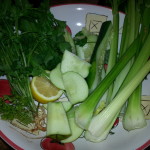
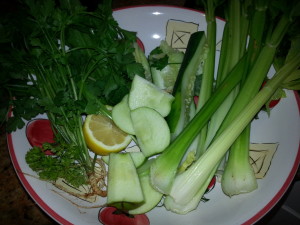 Celery, and it must be organic, is one of my favorite vegetables to juice. I love the fresh taste, the ease of pushing it through the juicer, and the smell of fresh celery just being juiced. I find it so refreshing. I just lowered my blood pressure and I believe I owe it all to celery juice.
Celery, and it must be organic, is one of my favorite vegetables to juice. I love the fresh taste, the ease of pushing it through the juicer, and the smell of fresh celery just being juiced. I find it so refreshing. I just lowered my blood pressure and I believe I owe it all to celery juice.
Celery is also claimed to have a calming effect on the body. If you are feeling stressed, don’t grab a chocolate bar, juice some celery instead and mix in a little apple and WOW do you have a healthy tonic.
A juice fast with celery is know to help the body eliminate toxins. Toxins ofter accumulate in the gallbladder, liver, and kidneys thereby reducing the toxins and possibility of the development of stones. (Ouch!)
There are a lot of other claims about the benefit of celery: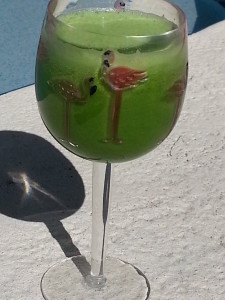
- Stops tumor growth
- Cures asthma
- Gout
- Weight problems
- Menstrual problems
- Treat inflammation
- Relieve headaches
- Nervousness
- Has vitamin A for your eyes
- Reduces your cholesterol
- It replenishes electrolytes
- Curbs sugar cravings
- It is a great snack and fill you up
That should convince you that celery is an incredible vegetable to juice and I try to use it everyday. It is considered one of the worse vegetables to eat non-organic so make sure you purchase it ORGANIC. Eat a lot of it everyday and it will keep you Slim, Healthy, Sexy!
Celery contains a lot of potassium, good sodium, vitamin A and C. Plus it is so inexpensive you should have a pile in it in your refrigerator at all times. Hungry? Munch on some celery. Want a snack? Put some almond butter on a stick of celery. Working out? Replenish with a couple sticks of celery or carry some freshly made celery juice with you. Think ahead!
should have a pile in it in your refrigerator at all times. Hungry? Munch on some celery. Want a snack? Put some almond butter on a stick of celery. Working out? Replenish with a couple sticks of celery or carry some freshly made celery juice with you. Think ahead!
Are You a Binge Eater?

 Are you a binge eater? Nothing to be ashamed to admit. You are amongst friends. I was a binge eater and I started young. Let me clarify that I am not the kind of binge and purge kind of binge-er. I am the eat everything sweet or carbohydrate in the house kind of eater. Or I should say I was.
Are you a binge eater? Nothing to be ashamed to admit. You are amongst friends. I was a binge eater and I started young. Let me clarify that I am not the kind of binge and purge kind of binge-er. I am the eat everything sweet or carbohydrate in the house kind of eater. Or I should say I was.
I have kicked that habit right out the door and I am a better person, or I’d like to think I am. Heck, haven’t we all binged a few times? My typical binging always had the TV involved. Boy, there was nothing like a cold, snowy day; a good movie on and a bowl of popcorn and pint of Ben & Jerry’s. Then after I consumed that, I would rip open the pantry doors searching for something else. Usually I would make my own chocolate chip cookie dough (without eggs) and eat it raw. Yup, then the guilt would come.
When I was younger I could get away with the typical binge but now that I am older, I cannot without the added weight gain. Binging had to end.
This is from Wikipedia, You know you are a binge eater if:
- Feels disgusted, depressed, or guilty after binge eating.
- Eats an unusually large amount of food at one time, far more than a regular person would eat.
- Eats much more quickly during binge episodes than during normal eating episodes.
- Eats until physically uncomfortable and nauseated due to the amount of food consumed.
- Eats when bored or depressed
- Eats large amounts of food even when not really hungry.
- Often eats alone during periods of normal eating, owing to feelings of embarrassment about food.
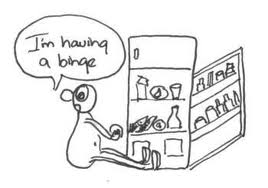 How I resolved my binge eating.
How I resolved my binge eating.
I knew I had to get a grip on my binge eating. It was becoming a growing problem and I had to face it once and for all. I did some researching and women are more likely to do it than men; usually has to do with depressions, loneliness or boredom; and you can learn from parents if they are binge eaters.
It seems pretty ridiculous that I was binge eating. I wasn’t depressed or lonely, but maybe I was bored. After all, binge eating isn’t really a group activity and I eat like a bird when I am at social functions. Well, unless it’s at the Christmas buffet where I go a little crazy on the sugary desserts. Oh well, that’s only one day a year. Why I really think I was binging is, I was having my own personal party with no one around to judge.
- So, I stopped eating in front of the TV.
- I eat smaller portions of healthy foods.
- I do not eat (or try not to eat) sweets.
- I do not snack unless it is a stalk of celery.
- I do not eat popcorn or chips.
- I no longer eat peanut butter in fact it is not even allowed in the house. (That’s my gateway food.)
- If I serve ice cream or pie after dinner, the leftover is sent to my neighbor’s house.
- I do not stare at the chocolate bars in the checkout line especially the Reese’s Chocolate and Peanut butter or take them home.
Because my willpower is at it’s lowest at night, I had to eliminate most of the sweets in the house or I will get up in the middle of the night and eat them. This is because I have cut my calorie intake to an all time low so I am usually hungry and will go to the freezer, pull out the pint of ice cream and with just spoon directly in to the container, eat it all in front of the TV. Ugh! Sometimes I don’t like ME.
It did take loads of practice but I kicked the habit and no longer automatically reach for something sweet or salty to eat while I watch TV. In fact, it sort has taken away the sport of TV watching which resulted in the many hours of TV I watch. Well heck, it’s not that much fun anymore now that I don’t binge. Funny how that worked. Hmmmm
Sarah’s Story: Quitting Sugar Saved My Thyroid.

Quitting Sugar Saved My Thyroid: Sarah Wilson’s Story
By Everyday Health Guest Contributor
Published Jan 13, 2014
By Sarah Wilson, Special to Everyday Health
Every now and then our bodies like to tell us, in no uncertain terms, to stop and take note. A common cold politely tells us to back off when we’re pushing too hard. More serious illness can arrive as a “canary down the mine shaft”, signalling the need to quit the toxic job or leave that relationship that’s run your spirit into a cul-de-sac. Some of us get the message too late. Some of us are lucky enough to get our wake-up call just in time.
Five years ago, I was keeping myself frantically busy editing Cosmopolitan magazine. I was running over 30 miles a week and had just competed in a 24-hour mountain bike race. Sleep? I only needed four or five hours a night, and I propped myself up on a rotating cycle of black coffee in the morning and red wine at night. I was burning my rechargeable, ever-ready candle at both ends in the most spectacular of fashions. And getting away with it.
But then my body collapsed.
It’d had enough of my arrogance, and it ground me to a halt. Quite literally. It was as if it were telling me: Young lady, you’re not going any further until you’ve had a good hard look at yourself. It’s time to wake up.
My hair had started falling out and my nails were peeling off in fine sheaths. I was tired. It felt like I was dragging my body through molasses. My thoughts were dark and fumbling and my joints were like jelly; I was falling over a lot and my knees soon became covered in scabs. In the middle of all this, I climbed Machu Picchu in Peru. I put the weakness in my limbs down to altitude sickness and did what I always do when think I’m dropping the ball – I climbed harder and faster.
When my period stopped, however, I got a blood test. The diagnosis was Hashimoto’s disease.
A Little Gland with Big Problems
Hashimoto’s is an autoimmune disease of the thyroid. This little butterfly-shaped ball of endocrine activity happens to be rather important – it controls metabolism, female hormones, circadian rhythms and energy levels. Pretty much, as one specialist told me, everything that makes you feel good about being you. Is it hereditary? A predisposition to it is, yes. It can be triggered by a litany of toxic factors.
When I was 22 I had Graves’, or hyperactive thyroid, where your body produces too much thyroid hormone, causing everything (metabolism, adrenalin, hormone production) to speed up. Twelve years later I’d burnt the poor thing out and developed a hypo-active, or under active, version (Hashimoto’s), characterized by a visceral slowing down. It was a bit like the lifespan of a supernova – it burnt furiously and brightly for a while, then, poof!, it was gone.
My case, I was told, was more of an intergalactic implosion. By the time I sought help, my thyroid stimulation hormone levels had ricocheted off the scale.
Because I’d left my condition untreated for so long, and my body was so depleted of energy, it went looking for juice elsewhere, wreaking adrenal havoc along the way. Further tests revealed my white blood cell count was barely existent; I had a leaky gut (protein was being absorbed undigested into my system) and kidney and gall bladder damage. Western medicine took a rather alarmist route with me: one endocrinologist told me I was “adrenally skeletal”. Another doctor, upon seeing my TSH levels, said it was a “miracle” I was vertical and prescribed hefty does of Thyroxin. What would’ve happened if I’d gone further without treatment, I asked him? He didn’t look up from his script: “heart failure”.
This titbit, strangely, came as a relief. My fatigue was justified! I was allowed to stop. So I quit my job and started the long process of learning how to rest and… just be.
A few more tests later and I learned I also had no female hormones left and was effectively infertile. For good? No one could be sure. Ever since I was 17, all paths had led to having children; it felt like my end point, after years of career slog, had been smudged out.
The Thyroid Roller Coaster
I was 34, single, childless, jobless and anchor-less. All of which made me more determined to get better. As in, truly better; not just back to where I’d been. Like so many women in my position, I began reading about alternative ways to heal my body and developed a hunger for a stiller, less adrenaline-fueled grind through life.
But – wait for it – then came the weight gain. When I was 22, I lost 33 pounds in 5 weeks. This time I put on 22 pounds in 15 weeks. Was this a lot? I know other sufferers who put on twice that; my grandmother fluctuated from 77 to 165 pounds during her thyroid roller coaster ride. But for anyone – particularly us women, who are more scrupulously judged – sudden, unjustified weight gain of any amount feels like too much.
I had spent years as a health advocate, encouraging women to accept a broader span of body contours, reminding them that our bodies change shape and size throughout our lives. I’m not a vain person, and I’m acutely mindful of how dangerous it is to become attached to a fixed idea of what we’re meant to look like. But I can tell you, going up two sizes over the course of one summer shook me to the core, and I had to draw on every ounce of Zen-like surrender and maturity to stop my self-esteem from crumbling.
All of society’s prejudices and neuroses about weight gain bubbled to the surface. I began to apologize for my bigger self; I’d tell friends and colleagues I hadn’t seen for a few months about my weight gain before they’d had a chance to issue a greeting. I wanted to save them the awkwardness of having to mask the judgement I thought they must be passing. This, in my experience, is a particularly female thing to do – to point out our faults before anyone else can. I guess it’s a way of controlling the uncontrollable, taking too much responsibility for the comfort levels of others.
Of course, my clothes didn’t fit anymore, but I refused to buy new ones. I convinced myself that the new-found curves were a passing phase, that they’d slide right off my frame soon enough. This lack of acceptance also took its toll: I stopped living in the present; I put off feeling beautiful and graceful.
Eventually, the lessons my body set out to teach me began to crystallize. Truth was, my body had to get heavier in order to get better. My bull-at-a-gate lifestyle of yore had left me drawn and scrawny. The more weight I put on, the better I got, organ by organ. It was as if I needed to nourish my internals with some padding and “juice” for them to heal. This process taught me some incredibly rewarding lessons in acceptance.
A New Approach to Getting Better
Getting better was a multi-dimensional affair. While Thyroxin band-aids the immediate problem, there is no instant fix for what caused the disorder in the first place, nor the subsequent damage I’d done. To fix this, I had to shift my lifestyle patterns.
If I can recommend two things to anyone suffering an autoimmune disease, it’s to meditate and to quit sugar. The combination worked to pacify and calm my entire system, at a cellular level. Slowly, slowly, the tension and contraction that caused my disease unraveled. The fuzz lifted, the moods abated, my energy increased in an even way. In some ways, healing an autoimmune disease is about addressing the symptoms and working back to the original cause.
Quitting sugar, quite frankly, is mandatory if you have an autoimmune disease. Sugar causes leaky gut (often cited as the precursor to autoimmune disease). Sugar inflames and mucks with the entire endocrine system and insulin spikes destroy the thyroid gland. In addition to the damage caused by insulin, a compromised thyroid gland will slow the removal of insulin from the bloodstream.
Meditation, meanwhile, shuts off my mind long enough for my body to have the space and energy to heal itself. Even the process of learning to meditate brings grace and gratefulness into one’s life. This shifts everything.
I’m now grateful– yes, grateful– for the wonderfully bodacious and comically obvious wake-up call I received. I needed to change the frantic way I lived my life, and lord knows I wasn’t going to do it on my own. So, what do you know? I got precisely the type of illness my body and me deserved. Over time, I’ve learned to unfurl and modulate my illness. Two months ago I got my period back. I can exercise daily now, and my gut is balancing out. My nails grow and my energy is mostly even. I don’t expect – or even want – complete recovery. It’s going to be a life of vigilant modulation: a way of life I’ve come to enjoy.
Sarah Wilson is an author, TV host, blogger and wellness coach whose journalism career has spanned 20 years across television, radio, magazines, newspapers and online. She is the former editor of Cosmopolitan magazine and was the host of the first series of MasterChef Australia, the highest rating show in Australian TV history. Sarah is the author of the Australian best-seller I Quit Sugar, due for release in the UK and the USA early 2014. She’s also authored the best-selling series of ebooks from IQuitSugar.com, including I Quit Sugar: an 8-week program, I Quit Sugar Cookbook, I Quit Sugar Chocolate Cookbook, I Quit Sugar Christmas Cookbook and the soon-to-be-released I Quit Sugar Kids Cookbook.


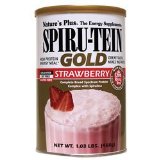
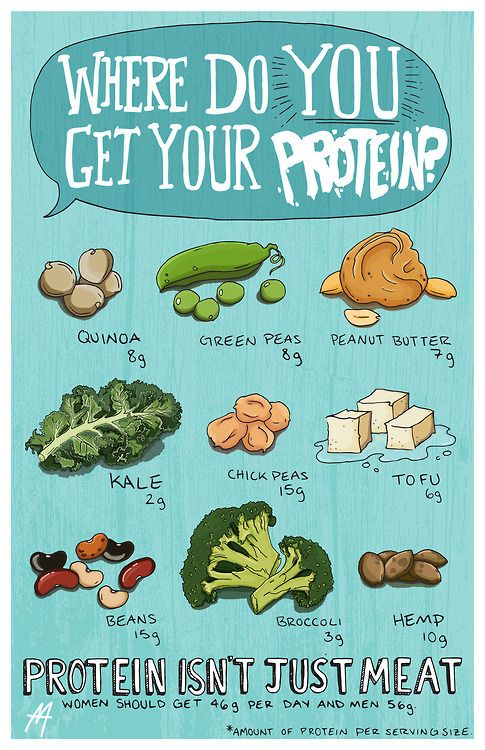
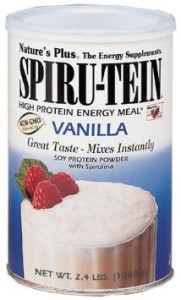
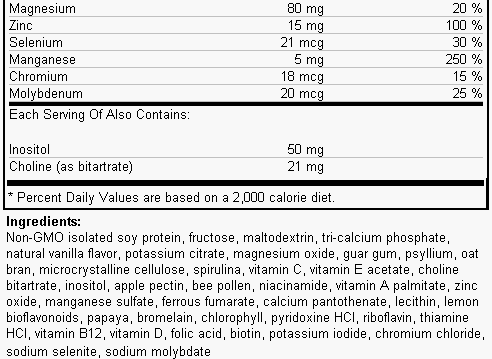
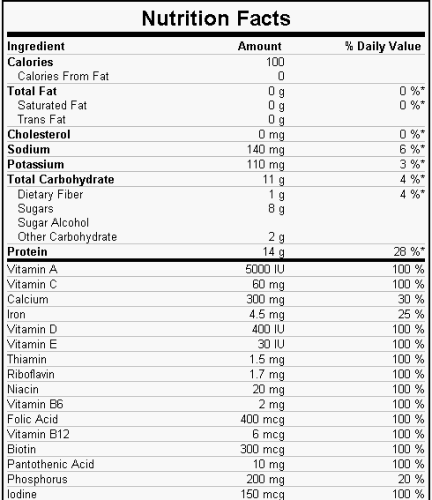

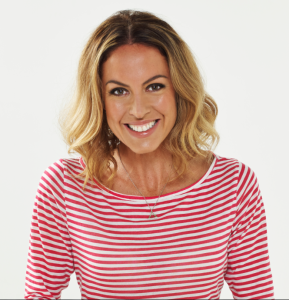

 D5 Creation
D5 Creation